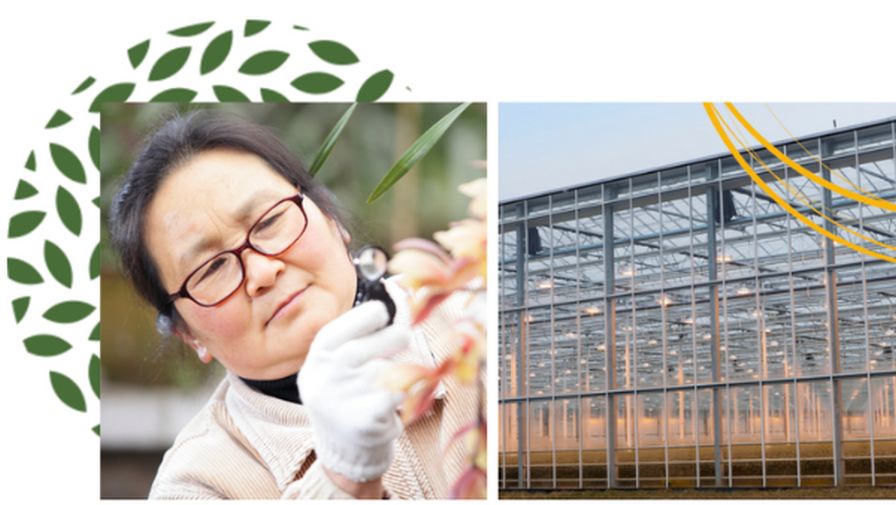American Floral Endowment Announces 2024-2025 Research Projects

Research Mission collage | American Floral Endowment
A core value of the American Floral Endowment (AFE)‘s mission is to help address industry challenges and struggles through the funding of cutting-edge research. AFE understands the important role research plays in sustaining the industry, and as a result, much of the research that has transformed industry practices in the past 60+ years has been sponsored by AFE, helping to provide longer-lasting, better-quality flowers and plants. The Endowment is committed to continuing to support advancements like this and accept new proposals from researchers each year.
AFE’s Research Committee and the Society of American Florists Growers Council carefully review these proposals and evaluate them for their focus, reach, and benefit to the industry. If selected, an independent scientific peer review is carried out.
AFE is pleased to announce that in 2024-2025, AFE will support 12 research projects in total, including five new projects and seven continuing projects, with $600,000 in funding from the Endowment’s Research Funds.
New Projects
INSECT MANAGEMENT
Mitigation of the Invasive Tropical Pest, Thrips Parvispinus: Clean Start and Biological Control: Rose Buitenhuis, Vineland Research and Innovation Centre
- Objective: The goal of this three-year project is to develop sustainable long-term solutions for the management of T. parvispinus in greenhouse ornamentals. Taking a systems approach, the project will investigate several IPM strategies that may be combined to provide optimal control of T. parvispinus.
Innovative Three-Tiered Management of Western Flower Thrips (WFT) in Ornamental Greenhouse Productions: Christian Nansen, UC Davis
- Objective: In this three-tiered project, they will develop, test, and promote a highly innovative approach to WFT management, in which they integrate three technologies: a state-of-the-art robotic rail system to release predatory mites, customized lighting (LEDs), and optimized formulations of certified organic insecticides with plasma-activated water.
NUTRITION AND WATER MANAGEMENT
Floriculture Production Practices in Peat Reduced Substrates: Brian Jackson, North Carolina State University
- Objective: Provide data on crop management strategies that can be immediately implemented in grower operations to improve production efficiency, reduce crop losses, and improve crop quality while using more economical and sustainable peat alternatives.
PRODUCTION TECHNOLOGY/TOOLS
Putting Floriculture A.I. to Work: Development of Smart Diagnostic Tools: Brian Whipker, North Carolina State University
- Objective: 1. To expand a robust framework of leaf tissue standards to improve the accuracy of diagnosing nutritional issues of the top floriculture species. 2. Develop an algorithm that creates an automated AI interpretation tool for leaf tissue diagnostics for poinsettias, geraniums, New Guinea impatiens, petunia, and gerbera. 3. Create a web-based diagnostic app for poinsettias, geraniums, New Guinea impatiens, petunia, and gerbera growers to input their lab analysis results and obtain interpretations and recommendations.
Reducing Peat-Use in Greenhouse Production through Wood Fiber Substrate Stratification: Jeb Fields, Louisiana State University
- Objective: Reduce peat use and reliance in greenhouse production through stratified substrate systems by (1) evaluating the effectiveness of wood fiber and other low-cost “filler” materials as sub-strata, (2) exploring shallow stratification to increase the proportion of filler materials, and (3) amending the upper (high-performance) strata with wood fiber. They will fine-tune irrigation and fertility applications to strengthen comprehension of stratified-grown crops, water use, and fertilizer efficiency.
Continuing Projects
PLANT BREEDING AND GENETIC ENGINEERING
Use of CRISPR to Develop Powdery Mildew Resistance in Gerbera: Dayton Wilde, University of Georgia
- Objective: 1. Gene editing of the gerbera MLO gene to confer powdery mildew resistance. 2. Develop a somatic embryogenesis system for gerbera. 3. Investigate non-transgenic means to introduce CRISPR constructs.
DISEASE MANAGEMENT
Enhancing the Performance of Biological Control Agents for Botrytis Control: Jim Faust and Guido Schnabel, Clemson University
- Objective: Prospective biological control agents for Botrytis blight often perform well in the lab but fail in the greenhouse. Their objective is to enhance the performance of these organisms by understanding the reason(s) that they fail and then provide the conditions that will help them survive and succeed as disease management tools in the greenhouse environment.
Asteraceae Petal Blight: Pathogen Identification and Methods to Facilitate Effective Control Strategies: Julia Kerrigan, Clemson University
- Objective: Identify causal organisms from flowers received from different commercial locations and seasons. Develop a methodology to distinguish these organisms. Screen fungicides for efficacy and resistance.
Supporting the U.S. Specialty Cut Flower Industry through Diagnostics, Disease Management, and Outreach (Gus Poesch Funding): Francesca Hand, Ohio State University
- Objective: Evaluate the use of anaerobic soil disinfestation for the management of pathogens affecting specialty cut flowers and develop outreach material to educate growers on plant diseases affecting cut flowers.
POST-PRODUCTION
Development of Potent Ethylene Antagonists for Floricultural Crops: Rasika Dias, The University of Texas at Arlington
- Objective: Development of potent anti-ethylene products for commercial use by selective targeting of ethylene binding sites, blocking ethylene bio-synthetic pathways, and creating stabilized silver formations.
PRODUCTION TECHNOLOGY/TOOLS
Identification and Application of Plant Growth Promoting Bacteria to Improve Floriculture Crop Plant Quality and Reduce Inputs: Michelle Jones, Ohio State University
- Objective: The goal of this proposal is to screen the OSU greenhouse rhizospheric bacteria collection to identify bacteria that can promote growth with lower fertilizer inputs and to characterize and optimize the growth-promoting effects of these bacteria in containerized soilless greenhouse production systems.
Developing Foliage Stock Plant, Liner, and Finish Plant Production Protocols for Temperate Climates: Roberto Lopez, Michigan State University
- Objective: To quantify how DLI, air and root-zone temperature, and PGRs interact to affect cutting yield and rooting, produce high-quality liners, and model how temperature influences leaf unfolding rates
A list of currently funded AFE projects can be found on American Floral Endowment’s website.









